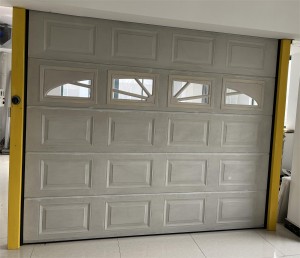Garage doors are one of the least energy-efficient features in your home. If you have an attached garage, you may find that your garage door is a major source of heat loss in winter and heat gain in summer. This can lead to higher energy bills and uncomfortable garage space. Fortunately, insulating your garage door is an easy and affordable solution to this problem. In this blog post, we’ll give you a guide on how to insulate your garage door and save money in the process.
materials you need
Before starting, you’ll need to gather some materials:
Insulation Kit – Available at most hardware stores and online retailers. Just be sure to choose an insulation kit designed specifically for garage doors.
Tape Measure – You’ll need this to measure your garage door.
Utility Knife – You will use this to cut the insulation.
How to Insulate Your Garage Door
Step 1: Measure Your Garage Door
Use a tape measure to measure the height and width of your garage door. This will help you choose the right size insulation kit for your garage door.
Step 2: Prepare the Garage Door
Before installing insulation, make sure your garage door is clean and dry. Any dirt or debris on the door may prevent the insulation from adhering properly.
Step 3: Cut Insulation to Size
Using a utility knife, cut the insulation to the size of the garage door. When cutting and installing insulation, be sure to follow the manufacturer’s instructions carefully.
Step 4: Install Insulation
Next, install the insulation by placing it over the garage door. Most insulation kits come with tape that you can use to secure the insulation to your garage door. Be sure to start at the top of the garage door and work your way down.
Step 5: Cutting Holes for Hardware
If your garage door has hardware like handles or hinges, you’ll need to cut holes in the insulation to accommodate them. Be sure to cut the holes carefully so the insulation fits snugly against the hardware.
Step 6: Cut Excess Insulation
After installing insulation, you may find that there is too much material. Use a utility knife to trim excess material and ensure a clean fit.
Step 7: Test the Garage Door
After installing insulation, test the garage door to make sure it opens and closes smoothly. If there is any problem, adjust the insulation as needed.
Benefits of Insulated Garage Doors
An insulated garage door can provide several benefits:
Energy Efficiency – Insulated garage doors help reduce energy bills by reducing heat loss in winter and heat gain in summer.
Increased Comfort – Insulation helps regulate the temperature of your garage, making it a more comfortable space to work or play.
Noise Reduction – Insulation helps reduce the amount of noise entering and exiting the garage, providing a quieter environment.
Increases Property Value – Installing insulation for your garage door can be seen as an investment in your home, which helps increase its value.
In summary
In conclusion, insulating your garage door is an easy and cost-effective way to improve your home’s energy efficiency. With the right materials and tools, you can complete this project in just a few hours. An insulated garage door not only reduces energy bills, it also provides a more comfortable and quiet space for your family. So why not insulate your garage door today and start reaping the benefits right away?
Post time: Jun-07-2023

